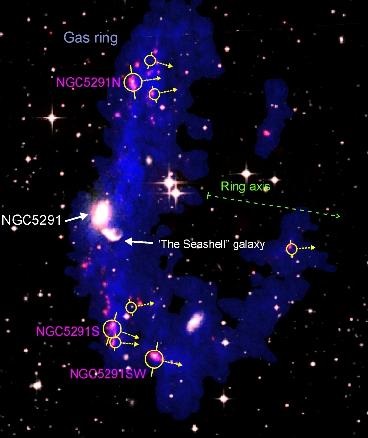
Most of the constellations invented and catalogued by Ptolemy such as Cassiopeia, Chameleon and many others were all well mentioned and stated in the 2ndcentury. However, the constellation Centaurus was an exception. Though it was one of the constellations that was catalogued by Ptolemy, it had not been mentioned in earlier Greek texts by the astronomer Eudoxus and the poet Aratus. Located in the southern hemisphere, it represents the centaur, a half man, half horse creature from the Greek mythology. The name Centaurus is derived from the Latin word ‘centaurus’ and the Greek word ‘kentauros’ and represents a creature form of the Greek mythology. It belongs to the Hercules family of constellations and can be best seen in the month of May at 9 pm.
Centaurus contains 11 notable stars, they are:
- Rigil Kentaurus or Alpha Centauri: A multiple star system, its traditional name is derived from the Arabic phrase Rijil Qantūris meaning ‘the foot of the centaur’. This star is the brightest component in the system and is the fourth individual brightest star in the night sky. It has an apparent visual magnitude of about –0.27 and is approximately 4.365 light years distant from the earth.
- Proxima Centauri: It is the third star in the Alpha Centauri system. A red dwarf, it is believed to be gravitationally associated with Alpha Centauri. It is nearest to the solar system as it is only 4.24 light years distant from the sun. Its apparent magnitude is about 11.05 due to which it is not visible to the naked eye.
- Hadar (Agena) or Beta Centauri: A blue–white giant star, the name Hadar is derived from an Arabic word meaning ‘ground’. Agena comes from a Latin word which means ‘the knee’. With an apparent magnitude of about 0.6, it is the tenth brightest star sky in the sky and is approximately 348.83 light years distant from the earth.
- Menkent or Theta Centauri: An orange K–type giant, it is sometimes also known as Haratan. Traditionally, it means ‘shoulder of the Centaur’ in Arabic. Its apparent magnitude is about 2.06 and is approximately 60.9 light years distant from the earth.
- Muhlifain or Gamma Centauri: It is a binary star composed of two stars that orbit each other every 83 years. The combined apparent magnitude of these two stars is about 2.2. Belonging to the spectral type A0, each apparent magnitude is about 2.9 and the system is approximately 130 light years from the earth.
- Ε Centauri or Epsilon Centauri: It is a blue–white giant. Due to the pulsations on its surface, the star exhibits variations in its brightness. Its brightness varies between magnitudes 2.29 and 2.31 and it is approximately 380 light years distant.
- Η Centauri or Eta Centauri: It is a very hot, class B dwarf star. Less than 20 million years old, it exhibits variable emissions in its hydrogen spectral lines. It is a fast rotating star with an equatorial speed of about 310 kilometres per second. Its apparent magnitude is 2.23 and is approximately 30 light years distant.
- Alnair or Zeta Centauri: It is a spectroscopic binary star. The name Alnair means ‘the bright star of the body of the Centaur’ and is derived from the Arabic phrase Nayyir Badan Qanṭūris. With an apparent magnitude of about 2.55, it is about 385 light years away from the earth.
- Ma Wei or Delta Centauri: It is a B–type star and derives its name from the Chinese name for the star Ma Wei san which means ‘the Third Star of Horse’s Tail’.
- v Centauri or NU Centauri: This star is a blue–white sub giant located about 475 light years away from the earth and is classified as a Beta Cephei type variable.
- Ke Kwan or Kappa Centauri: a binary star, Ke Kwan is located about 540 light years distant. Sometimes, it is referred to by its Chinese name Qí Guān sān meaning ‘the Third Star of the Imperial Guards’.
- BPM 37093: It is a white dwarf exhibiting variations in brightness due to the non–radial gravity wave pulsations within itself.
There are numerous deep sky objects in this constellation. A few of them include:
- Centaurus A or NGC 5128: It is the fifth brightest galaxy in the sky. It is also believed that this star contains a massive black hole in its centre. Either lenticular or a giant elliptical, it is one of the closest radio galaxies to the solar system between 10 and 16 million light years. Its apparent magnitude is about 6.84.
- Omega Centaury or NGC 5139: It is a globular cluster and is clearly visible to the naked eye. It orbits the Milky Way Galaxy and has an apparent magnitude of about 3.7. It is approximately 15,800 light years away from the earth.
- NGC 4945: It is the second brightest galaxy in the Centaurus. A sub–group and the brightest galaxies in the Centaurus A/M83 group, it is a spiral galaxy believed to be containing a huge black hole.
- NGC 4650 A: It is a polar ring galaxy in which the outer ring of stars and gas rotates over the poles of the galaxy.
- The Blue Planetary or NGC 3918: Sometimes, it is referred to as Southerner, a bright planetary nebula. With an apparent visual magnitude of about 8.5, it can be observed in a small telescope.
- NGC 4622: It is a face–on–spiral galaxy which is sometimes called the ‘backward galaxy’. This is due to two of its spiral arms which seem like going in the opposite direction of the spiral and it also has leading spiral arms which point towards the rotation of the star.
- NGC 5090 and NGC 5091: They are a pair of galaxies that are in the process of merging and colliding.
- NGC 4696: It is an elliptical galaxy, a large cluster containing hundreds of constellations.
- NGC 5253; it is an irregular galaxy. With an apparent magnitude of about 10.3, it is approximately 10.9 million light years away from the earth.
- NGC 5408: It is another irregular galaxy with an apparent magnitude of about 12.2.
- NGC 4603: This spiral galaxy is known for containing more than 3 Cepheid variable stars.
- NGC 5291: It is a system of interacting galaxies surrounded by a collisional ring that contains fresh young stars forming tidal dwarf galaxies.

Seen at latitudes between +25° and –90°, it lies in the third quadrant of the southern hemisphere.
This constellation occupies an area of 1060 square degrees, making it the 9th largest constellation in the sky. This constellation is notable for having the closest star to the earth that lies 4.37 light years distant from the earth. The star furthest away is 525 light years from the earth. So, it can be said that Centaurus is 525 light years distant from the earth.
The Babylonians recognized this constellation as the Bison–man (MUL.GID.ALIM). They imagined it as a four legged bison having the head of a man, its torso attached to the rear legs of a bison or a bull. They also associated this creature with the Sun god Utu. Later, the Romans and Greeks associated Centaurus with a mythological creature which was half man and half horse. According to a Roman poet Ovid, it represents Chiron, the wise centaur who was a guide for many well known Greek heroes. Chiron was the son of Cronus, the Titan King and Philyra, the sea nymph. Once when Cronus was seducing Philyra, he turned himself into a horse to evade being caught, the result was the birth of Chiron. Chiron lived in a cave on Mount Pelion tutoring young princess; soon, he became a known and respected teacher of medicine, music and hunting. Chiron was immortal; hence, when he was accidently struck by Heracles’ arrow, he could not die but suffered from terrible pain. Seeing this, Zeus released Chiron from immortality and placed him among the stars.

The neighbouring constellations of Centaurus include Antila, Carina, Circinus, Crux, Hydra, Libra, Lupus, Musca and Vela.
G Kowledge of | 0 Comments >>
0 Comments
Leave Comment
Your email address will not be published. Required fields are marked.